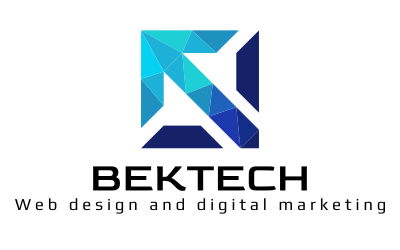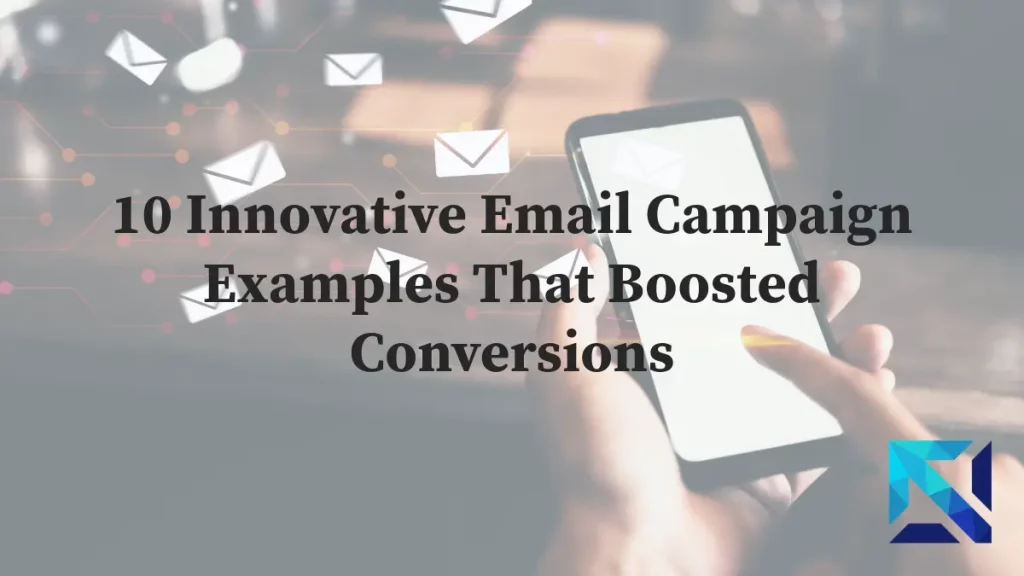The rise of blockchain technology and the concept of decentralization has sparked a new era of the internet, known as Web3. In this article, we’ll explore the differences between Web2 and Web3 and how decentralization is revolutionizing customer connections in the world of marketing.
Remember firing up that screeching dial-up modem and waiting forever just to check your Hotmail? Oh, how far we’ve come!
I still catch myself chuckling when I think about those “Under Construction” GIFs that used to pepper every other website. Fast forward to today, and here I am, ordering groceries through an app while my smart fridge suggests recipes. Wild, right?
But hold onto your keyboards, fellow digital adventurers, because we’re standing on the edge of something even bigger. Web3 isn’t just another tech buzzword – it’s like we’re watching the internet grow up and move out of its parents’ house. Gone are the days when brands simply talked at us through our screens. Now? We’re entering an era where you and I aren’t just along for the ride – we’re in the driver’s seat.
As someone who’s been geeking out over digital marketing for the past decade, I can tell you: this shift is different. Web3 marketing isn’t just changing the game; it’s creating an entirely new playing field. Imagine a world where your relationship with brands feels less like being subjected to endless ads and more like being part of an exclusive club where your voice actually matters.
What is Web2?
Web2, also known as the second generation of the internet, refers to the current state of the internet that we are all familiar with. It is characterized by centralized platforms, such as social media networks, e-commerce sites, and search engines, that control and manage user data.
In Web2, users are the product, and their data is collected, stored, and used by these centralized platforms for targeted advertising and other purposes. This has led to concerns about privacy and data ownership, as well as the power and influence of these platforms over our online experiences.
What is Web3?
Web3, also known as the third generation of the internet, is a decentralized version of the internet that is built on blockchain technology. In Web3, users have more control over their data and interactions, and there is no central authority or platform that controls the flow of information.
Web3 is based on the principles of decentralization, transparency, and trust. It allows for peer-to-peer interactions and transactions without the need for intermediaries, making it more secure and efficient.
How Does Web3 Revolutionize Customer Connections?
Decentralized Marketing
One of the most significant ways that Web3 is revolutionizing customer connections is through decentralized marketing. In Web2, companies rely on centralized platforms to reach and engage with their target audience. This often involves paying for advertising space or using algorithms to target specific demographics.
In Web3, companies can use decentralized marketing strategies, such as influencer marketing and community building, to reach their target audience directly. This allows for more authentic and personalized connections with customers, as well as the potential for more cost-effective marketing strategies.
Data Ownership and Privacy
In Web2, users often have little control over their data and how it is used by centralized platforms. This has led to concerns about privacy and data ownership, as well as the potential for data breaches and misuse of personal information.
In Web3, users have more control over their data and can choose to share it with companies on a need-to-know basis. This not only gives users more control over their privacy but also allows for more accurate and relevant targeting by companies.
Transparency and Trust
Web3 is built on blockchain technology, which is known for its transparency and trust. In Web2, users often have to trust centralized platforms to protect their data and provide accurate information. This can lead to issues with fake news, misinformation, and data manipulation.
In Web3, information is stored on a decentralized ledger that is transparent and immutable. This means that users can trust the information they receive and have more control over their online experiences.
Personalized Experiences
Web3 also allows for more personalized experiences for customers. In Web2, companies often use algorithms and data collection to target specific demographics and interests. However, this can lead to a one-size-fits-all approach that may not resonate with all customers.
In Web3, companies can use decentralized data to create more personalized experiences for their customers. This can include personalized product recommendations, tailored content, and more targeted marketing strategies.
Web2 vs Web3: What Are the Key Differences?
Centralization vs Decentralization
The most significant difference between Web2 and Web3 is the level of centralization. In Web2, centralized platforms control and manage user data, while in Web3, data is decentralized and controlled by the users themselves.
Intermediaries vs Peer-to-Peer
In Web2, intermediaries, such as social media platforms and e-commerce sites, act as middlemen between companies and customers. In Web3, peer-to-peer interactions and transactions are possible without the need for intermediaries.
Data Ownership and Privacy
Web2 relies on centralized platforms to store and manage user data, which can lead to concerns about data ownership and privacy. In Web3, users have more control over their data and can choose to share it on a need-to-know basis.
Transparency and Trust
Web2 relies on trust in centralized platforms to provide accurate information and protect user data. In Web3, transparency and trust are built into the technology itself, making it more reliable and secure.
What is Web3 Marketing?
Web3 marketing refers to marketing strategies and practices that leverage the principles of decentralization and blockchain technology. Unlike traditional marketing methods that rely on centralized platforms and intermediaries, Web3 marketing focuses on creating direct and authentic connections with customers through decentralized platforms.
In Web3 marketing, companies prioritize transparency, trust, and data ownership, allowing users to have more control over their data and interactions. This approach enables more personalized and targeted marketing strategies, such as influencer marketing, community building, and personalized experiences tailored to individual preferences.
By embracing Web3 marketing, companies can enhance customer engagement, build stronger relationships with their target audience, and create more secure and efficient marketing campaigns in the decentralized landscape of the internet.
How Can Companies Embrace Web3 Marketing?
Utilize Decentralized Platforms

One of the first steps companies can take to embrace Web3 marketing is to utilize decentralized platforms. These platforms, such as blockchain-based social media networks and e-commerce sites, allow for more direct and authentic connections with customers.
Engage with Influencers and Build Communities
In Web3, companies can engage with influencers and build communities to reach their target audience directly. This allows for more personalized and authentic connections with customers, as well as the potential for more cost-effective marketing strategies.
Embrace Personalization and Transparency
Web3 allows for more personalized experiences for customers, as well as increased transparency and trust. Companies can embrace this by using decentralized data to create personalized experiences and being transparent about how they use customer data.
Real-World Examples of Web3 Marketing
Brave Browser
Brave Browser is a decentralized web browser that uses blockchain technology to protect user privacy and provide a more secure browsing experience. It also allows users to earn cryptocurrency by viewing ads, giving them more control over their online experiences.
Steemit
Steemit is a blockchain-based social media platform that rewards users for creating and curating content. This encourages, motivates
users to create high-quality content and engage with the community, creating a more authentic and engaged user base.
How Will Web 3.0 Change Marketing?
Web3.0 is set to revolutionize marketing in several ways:
1. Decentralized Marketing Strategies
Web3.0 will enable companies to move away from relying solely on centralized platforms for marketing. Instead, they can leverage decentralized marketing strategies like influencer marketing and community building to establish direct connections with their target audience. This shift will lead to more authentic and personalized interactions with customers.
2. Enhanced Data Ownership and Privacy
With Web3.0, users will have greater control over their data and can choose how and when to share it with companies. This increased data ownership will not only empower users but also enable companies to engage in more accurate and relevant targeting, respecting users’ privacy preferences.
3. Transparency and Trust
Blockchain technology, the foundation of Web3.0, ensures transparency and trust in data transactions. This will eliminate issues related to fake news, misinformation, and data manipulation that are prevalent in Web2.0. Users can trust the information they receive, leading to more reliable online experiences.
4. Personalized Experiences
Web3.0 will allow companies to create highly personalized experiences for their customers. By utilizing decentralized data, companies can offer tailored content, personalized product recommendations, and more targeted marketing strategies. This level of personalization can significantly enhance customer engagement and satisfaction.
In conclusion, Web3.0 will transform marketing by promoting decentralized strategies, empowering users with data ownership, fostering transparency and trust, and enabling personalized experiences that resonate with customers on a deeper level.
Benefits of Using Web3 Marketing Strategies
Utilizing Web3 marketing strategies offers several benefits for companies:
- Transparency: Web3 marketing prioritizes transparency, allowing companies to build trust with their audience by being open about their data practices and interactions.
- Data Ownership: With Web3, users have more control over their data, leading to increased data ownership. Companies can leverage this by providing personalized experiences while respecting user privacy.
- Personalization: Web3 enables companies to create highly personalized experiences tailored to individual preferences. This level of personalization can enhance customer engagement and satisfaction.
- Enhanced Customer Engagement: By embracing Web3 marketing, companies can engage with their audience in more direct and authentic ways, leading to stronger relationships and more engaged customers.
- Security: Web3 marketing can create more secure and efficient marketing campaigns in the decentralized landscape of the internet, ensuring data security and privacy for both companies and users.
In conclusion, adopting Web3 marketing strategies can help companies enhance customer relationships, improve data security, and create more personalized and engaging marketing campaigns.
The Future of NFTs in Web3 Marketing Strategies
Remember when everyone thought NFTs were just about selling digital art for ridiculous prices? Well, the game has completely changed. Smart brands are now leveraging NFTs as powerful marketing tools in ways that actually make sense for both businesses and consumers.
Think of NFTs as digital VIP passes on steroids. Brands like Nike and Adidas aren’t just selling digital sneakers – they’re creating exclusive communities where customers get special access to product drops, virtual events, and real-world experiences. For example, Starbucks’ Odyssey program turns their loyalty rewards into NFTs, giving customers ownership of their perks while creating a tradeable community economy.
The real magic happens when NFTs bridge the gap between digital and physical experiences. Imagine buying a concert ticket as an NFT that not only gets you into the show but also gives you lifetime access to exclusive content, meetups, and merchandise. This isn’t just marketing – it’s relationship building on blockchain steroids.
Key NFT marketing opportunities include:
- Limited edition digital collectibles that unlock real-world benefits
- Community tokens that give voting rights on future product decisions
- Loyalty programs with tradeable rewards
- Exclusive access passes to both virtual and physical events
- Digital proof of authentic product ownership
Navigating the Web3 Skills Gap: What Marketers Need to Know
Let’s get real – the shift to Web3 marketing isn’t just about learning new tools; it’s about rewiring how we think about customer relationships entirely. As someone who’s helped teams transition into Web3, I can tell you the learning curve is steep but not impossible.
The most successful Web3 marketers aren’t necessarily blockchain experts (though that helps!). Instead, they’re the ones who understand how to blend traditional marketing principles with Web3 capabilities. It’s like learning to cook with new ingredients – you don’t need to be a farmer to create amazing dishes.
Essential skills for modern Web3 marketers:
1. Technical Literacy
- Basic understanding of blockchain technology
- Familiarity with crypto wallets and transactions
- Knowledge of smart contract functionality
- Understanding of decentralized applications (dApps)
2. Community Building 2.0
- Managing decentralized autonomous organizations (DAOs)
- Creating value-driven token economies
- Facilitating peer-to-peer engagement
- Building consensus in decentralized communities
The good news? Resources for learning these skills are everywhere. From online courses to hands-on projects, marketers can start small and scale their knowledge gradually. The key is to stay curious and not be afraid to experiment – after all, we’re all still early in this Web3 journey.
Pro Tip: Start by creating your own crypto wallet and joining a few DAOs. There’s no better way to understand Web3 marketing than by experiencing it firsthand as a user.
In Conclusion
Web3 is revolutionizing customer connections by decentralizing data and interactions, providing more control and transparency for users, and allowing for more personalized and authentic experiences.
Companies can embrace Web3 marketing by utilizing decentralized platforms, engaging with influencers and building communities, and embracing personalization and transparency. As technology continues to evolve, it’s essential for companies to adapt and embrace the potential of Web3 for their marketing strategies.
While Web3 offers exciting possibilities, navigating this evolving landscape presents challenges. Regulatory frameworks are still under development, and user adoption is in its early stages.
How can I get started with Web3 marketing?
Learn about blockchain, crypto, and dApps (decentralized applications). Build a community and engage on Web3 platforms like Discord and Telegram. Explore tools for on-chain analytics and NFT marketing.
Is Web3 the future of marketing?
Web3 has the potential to revolutionize marketing with greater transparency, community ownership, and direct engagement. However, it's still evolving.
How big is the Web3 market?
The Web3 market is rapidly growing, with estimates reaching trillions in potential future value. However, accurate figures are difficult due to the nascent nature of the space.
Is Web3 and Web 3.0 different?
No significant difference. "Web3" and "Web 3.0" are often used interchangeably to refer to the next iteration of the internet, characterized by decentralization and user empowerment.
Why nobody really uses Web3 yet?
Web3 adoption is still in its early stages. Factors like technical complexity, security concerns, and limited user base contribute to this. However, ongoing development and education efforts are fostering growth.






